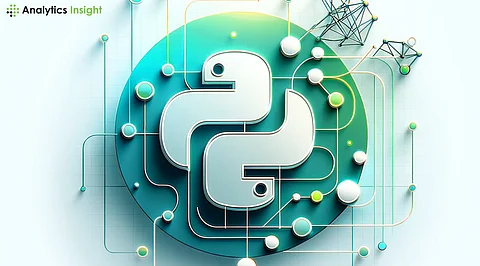

For a long time, Python has been the language that most experts use for AI programming. This is due to its simple syntax, large community, and powerful libraries, making it the best language for both data scientists and machine learning engineers. However, some have been questioning whether the reign of Python will continue, especially with the approach of 2025, where another language may finally outdo it.
Python is one of the most popular programming languages in AI, thanks to its rich library ecosystem. It supports prefabricated functions and tools made available through libraries like TensorFlow, PyTorch, and sci-kit-learn. The development of AI models is significantly easier with the help of these libraries as all of them are developed and perfected over time and are very reliable and efficient.
Another major reason Python is predominantly used is that it is fairly simple to use. The syntax of Python is easier than that of most other programming languages and much easier to comprehend for newcomers. Thus, many developers were attracted to the language, with many contributing back and making new libraries and tools.
However, Python has its own set of disadvantages. The most common criticism against Python is that it is a non-performing language. It is an interpreted language and generally lags behind compiled languages such as C++ or Java. This is going to be a big issue when AI applications need more processing power.
Another challenge that Python faces is the emergence of new programming languages and tools. Julia and Rust are two languages that aim at being both easy to use and highly performant. New shiny languages are coming into the AI ecosystem.
For example, Julia is specifically designed for numerical and scientific computing. It provides a performance that is similar to C++ but at the same time relatively user-friendly. A language that has focused on systems programming is Rust. It is focused on safety and performance. This is being applied in some applications for AI which are highly reliant on reliability and efficiency.
Another threat to potential dethroning by Python is the revival of AutoML. AutoML tools automatically carry out most of the tasks that are related to the development of AI models, for instance, feature engineering and model selection. This may contribute to the demand for less specialized expertise in Python and other programming languages.
The other new technology will, of course, be quantum computing. Quantum computers are many orders of magnitude faster than their classical cousins at certain kinds of problems. When these quantum computers become available, they are most likely to be used in developing new algorithms and techniques that might be more convenient for other programming languages.
All this aside, Python is here to stay. The community is enormous and the library ecosystem is colossal. It has proven its track record. Many companies have invested much into AI systems based on Python that will not move from the language overnight.
Some may predict a long period with Python as the top language for AI research and practice, while others will be likely to give up that spot to some other language. The future of AI programming languages is uncertain because, firstly, the faces of programming languages are constantly in evolution; secondly, new technologies are continually emerging; and thirdly, the real needs of the AI community are hard to predict.
In a few years from now, perhaps by 2025, the AI landscape will be different from what is seen today. Python may have topped the list for a long time, but there is rising competition from other languages. Here, the issue with Python is that it needs to learn and evolve according to the changed needs of the AI community. It would be interesting to see if that is possible, but one thing is sure: the coming years will be quite exciting in the world of AI and programming languages. This competition will more than likely produce innovation, thereby further creating even more powerful and accessible tools in AI.
